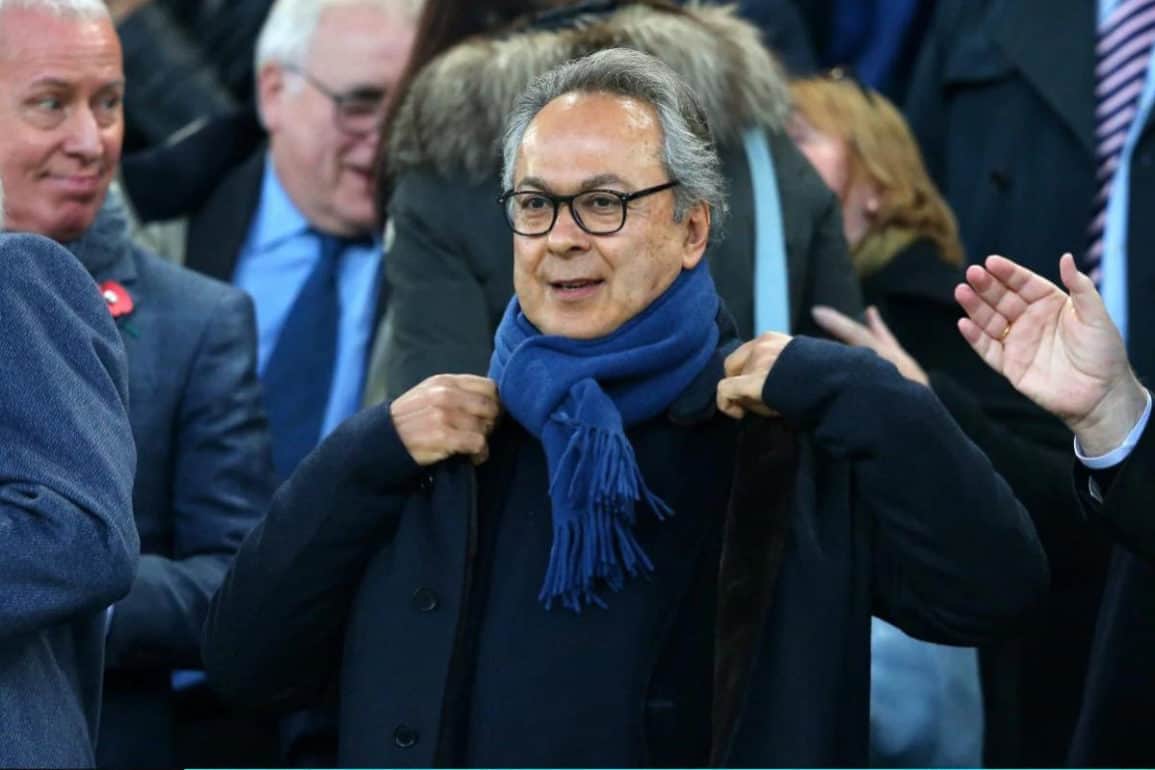Since his arrival, Farhad Moshiri has been determined to elevate the club to new heights. He has spent almost half a billion pounds on transfers at an average of £110 million per summer. His two director of footballs have lasted two years each so far, with their second season spending proving questionable.
Despite the mid-season arrival of Carlo Ancelotti, last season was Everton’s worst league finish since 2004. Their points tally was level with the Sam Allardyce team who finished 8th in 2018 in arguably the club’s most toxic season.
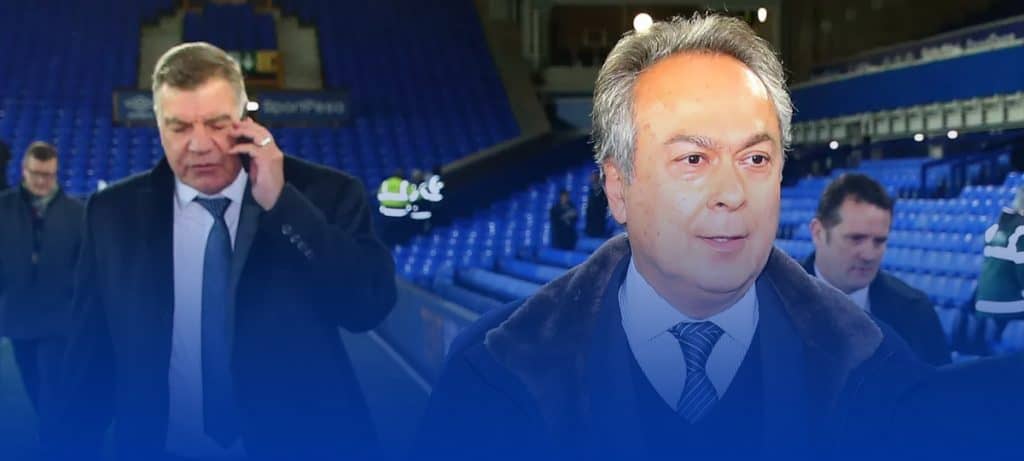
It is clear that a lack of planning and direction has caught up with the Blues. The squad is a mish-mash of players from 5 different managers, with Ancelotti still yet to make his mark on the first team. A gargantuan task lies ahead for the Italian to clear out and rebuild the squad – one that will take more than a single summer.
The early signs indicate that this covid-affected window will be even more of a waiting game than usual. Fans’ patience will be tested more than ever across the league, not just at a transitioning Everton. Frustrated blues need look no further than Anfield or Old Trafford, where the countries two biggest clubs are struggling to justify free-handed pre-season spending.
Everton are of course in a totally different predicament. The need for immediate results is desperate, exacerbated by the team’s dire showing at the end of the campaign. Which is why it may not come as a surprise to see Ancelotti going all in for some familiar names.
Allan and James Rodriguez are class players, there is no doubt about it. Seasoned professionals with Champions League and international experience, they are set to breathe new life into a turgid midfield desperately in need of a shake-up. However, Everton’s current squad already has about 15 full internationals. At least nine current first team players also have experience of Champions League football. Yet Everton are further from the top 4 now than they have been for over a decade.
Looking back
If we take a look at the recruitment window by window we can analyse what went well and what didn’t – with the added benefit of hindsight of course. Steve Walsh’s first window saw a 50:50 ratio of success. Bolasie and Williams were signed for a combined fee of approx. £40mil. They were ‘Premier League proven’ options, aged 27 and 31 respectively, who failed to deliver beyond a season. Gana Gueye (25) and Dominic Calvert-Lewin (19) also came in for a combined £8mil. The pair, relatively unknown at the time, proved to be Steve Walsh’s best signings.
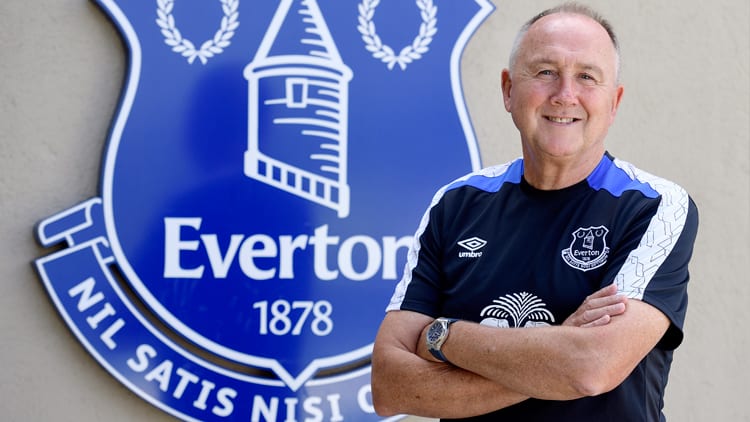
The following season was a splurge by comparison. Almost £200mil was spent on 10 players – it is no secret that the majority did not turn out to be a success. Sigurdsson (28) at £45million has proven to be a particularly controversial signing, polarising opinion even when performing at his rare best. Wayne Rooney (31) and Theo Walcott (28) provided short term improvement in what was the club’s worst season for over a decade.
Marcel Brands’ arrival was a welcome shake up, refocusing the club towards a more sustainable model. Brands, coming off the back of an impressive 13 years at PSV and AZ Alkmaar, went for a totally different profile of player. He identified younger talent, many of whom had been frozen out at bigger clubs. Richarlison (21), Mina (23), Zouma (23), Digne (24), Gomes (25) and Bernard (25) came in transforming the old guard – it was the youngest group of recruits since Moshiri took over.
Last season’s window was a mishmash of youth and experience. The young signings have all yet to live up to their price tag for a number of reasons, whether due to injury in Gbamin’s case or settling into a new league for young Moise Kean. The older signings, Delph and Sidibe, did not shown enough to suggest their futures lie at the club.
Looking forward
It is true that there is not a clear correlation between age and success. Some signings have worked and some haven’t regardless of age demographic. What is clear is the differing consequences of their respective success or failure. If a player is bought at a certain age, there is a limit to the benefit of their acquisition. Every expenditure presents an element of risk. If you are looking to attain a sustainable level of success over a long period, you must do whatever you can to negate those risks and give yourself the best possible chance of stable longevity.
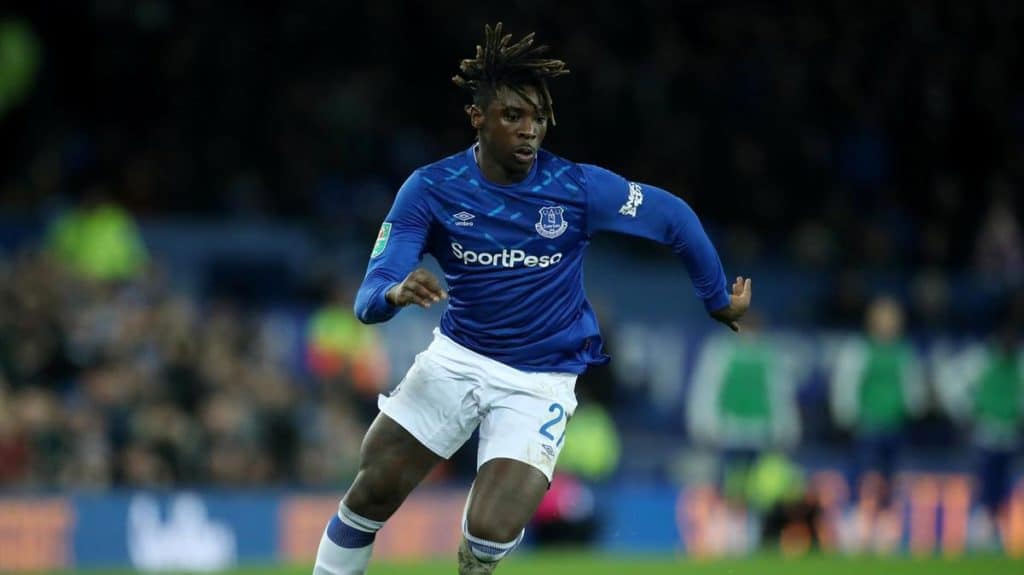
A case in point can be seen in Moise Kean. The 20 year old striker, who was signed for approx. £25mil, has scored just 2 goals in his first season. If Everton chose to move him on they could recoup most of if not all of the fee they paid due to his age and potential. Cenk Tosun by contrast, almost 10 years Kean’s senior, has proven he can score goals at this level, however Tosun’s chances of leaving for even a fraction of his initial feel are slim (albeit partly due to injury).
There seems to be an element of blind optimism amongst fans this summer – and who can blame them? The club are now linked with a new calibre of player thanks to the arrival of Ancelotti. But we would be foolish not to question a confused strategy if there is a risk of repeating the same old mistakes.
The numbers
Some statistics supplied by ‘The Gwladys Street’ on Twitter this week provided a fascinating insight into the squad’s structure. When it comes to the balance between youth and experience, the defence is the most balanced area of the pitch with an average age of 24.5. The exciting forward line lacks some experience with an average age of just 22. The middle of the park, undoubtedly Everton’s problem area, is also the oldest part of the pitch average age of 27. With the acquisitions of Doucoure, Allan and James Rodriguez, that average would only rise further.
When it comes to strategy, the figures on player transfers by age paints an even clearer picture. Everton have spent £192m on players aged 27+ over the last 6 years. Of these recruits, they have recouped £16.5m in the last 6 years. Moreover, Everton have spent £330.5m on players under the age of 27 over the last 6 years. Everton have recouped £274m of that £330.5m on the players that were signed under the age of 27 over the last 6 years.
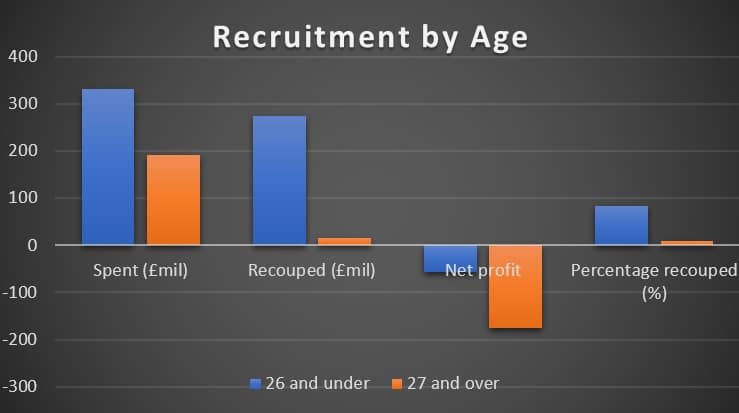
We can interpret these figures in a number of ways. In terms of profitability, it is clear that recruiting younger players would be a safer play. But some fans are asking why does this matter? Terms such as ‘It’s not my money’ and ‘just trust the manager/director of football’ are banded about – phrases that have an understandable air of frustration behind them. But however exasperated we have become, we should worry about how the club spends their money. FFP and the planned new stadium means funds are not unlimited. It may not be our money, but we have a personal investment in the club to operate sensibly and in our best interests.
The dynamic between manager, board and director of football has changed with every appointment. It is imperative that everyone is singing off the same hymn sheet. If one person has a clear view of how to run the football club that significantly differs from the other, we could witness an power imbalance or even the premature departure of an important figure. A contrast of philosophies would perpetuate the muddled strategy that has caused the club to regress over the past 5 years.
The new trio
All things considered, the imminent signings can be seen one of two ways. Take away the caution, looking at the here and now, Doucoure provides dynamism and a physical presence in both boxes that Everton have long been lacking. A key transfer target for the past two seasons, it looks as if the club are finally going to get their man for a reduced fee. He will bring experience of the league and will be joining in his peak.
There is no guarantee that Allan and James will be up to the physicality of the Premier League. However, each of Ancelotti’s former players have undoubted ability and again offer qualities that Everton’s current midfield lack. Allan could be the perfect tackler and ball carrier to replace Gueye – he is better on the ball than Gana but perhaps a little less dogged in his break up play. If he comes in and adapts well to the league, he could be the most important signing of the three.
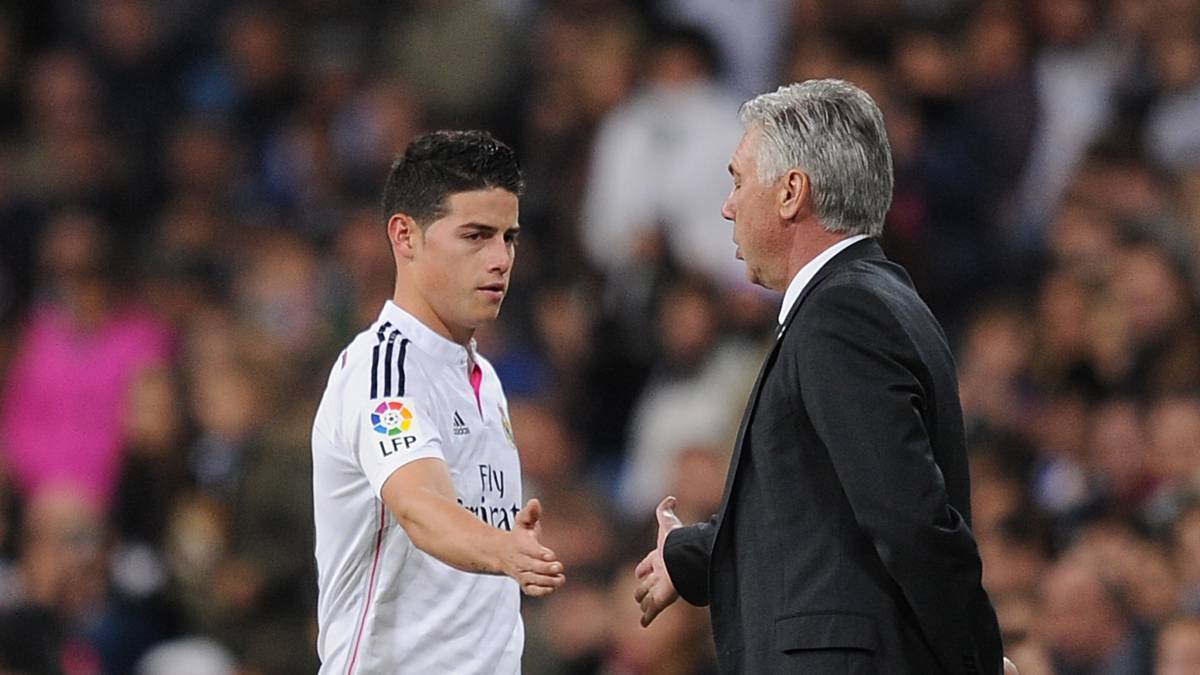
James is totally different prospect. If he stays fit and finds form, he has the potential to be a revolutionary signing. He would offer similar qualities to Gylfi Sigurdsson, but at a much higher level. His goal return has been outstanding when fit, both for Bayern and Real Madrid. His fitness along with his pace are the only question marks over his suitability, however he has proven himself in every major Europe league bar Serie A and England. There is a clear need for a left footed forward in the squad. If he can fill that space on the right and cut inside or drift in behind the striker, he could link the midfield and attack perfectly. His attacking stats show he is amongst the best in his position in Europe when fit and firing.
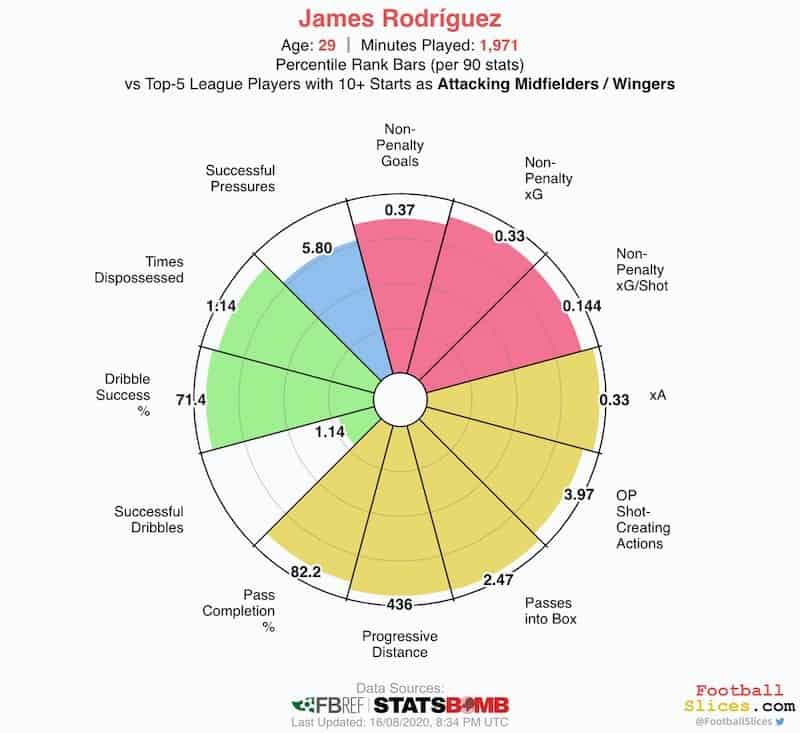
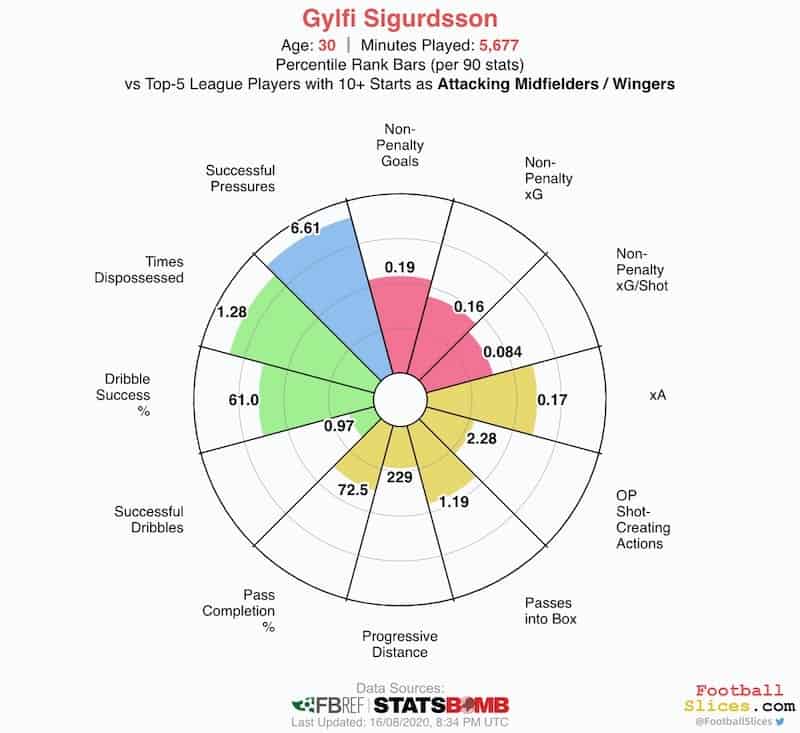
It’s obvious that Brands’ policy is more focused on youth, whereas Ancelotti seems to favour what he knows. It is true that we’re at a point where we need immediate results, so perhaps Brands’ long term strategy is on hold this window. However, with the singings of Nkounkou and Branthwaite already this year, the exciting young talent is still trickling in. Regardless, to analyse the club’s decision to buy two 29-year-olds and a 27-year-old should not be seen as negative or unnecessary. For a fanbase that has suffered more false dawns post investment than almost any other, it is fundamentally necessary to asses these deals with a degree of caution. Scepticism and pessimism are two distinctly different things.


